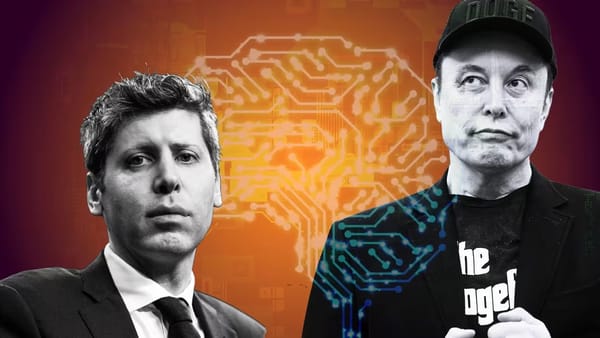Alexa, Don't Even Dare
Toilet Paper? Ask Alexa. But Sneakers? That's Personal.
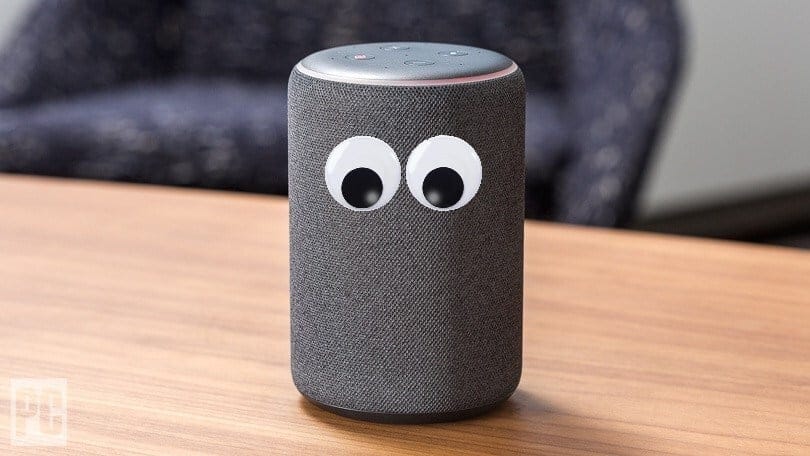
At first glance, AI-powered shopping feels like the dream scenario.
A flick of the wrist, a brief command, and your AI butler diligently sifts through thousands of listings across DoorDash, Amazon, and Walmart, delivering precisely what you need at warp speed. Amazon's "Buy for Me" already promises a seamless, hands-free shopping bliss. No more endless scrolling, no more agonizing indecision between indistinguishable iPhone chargers.
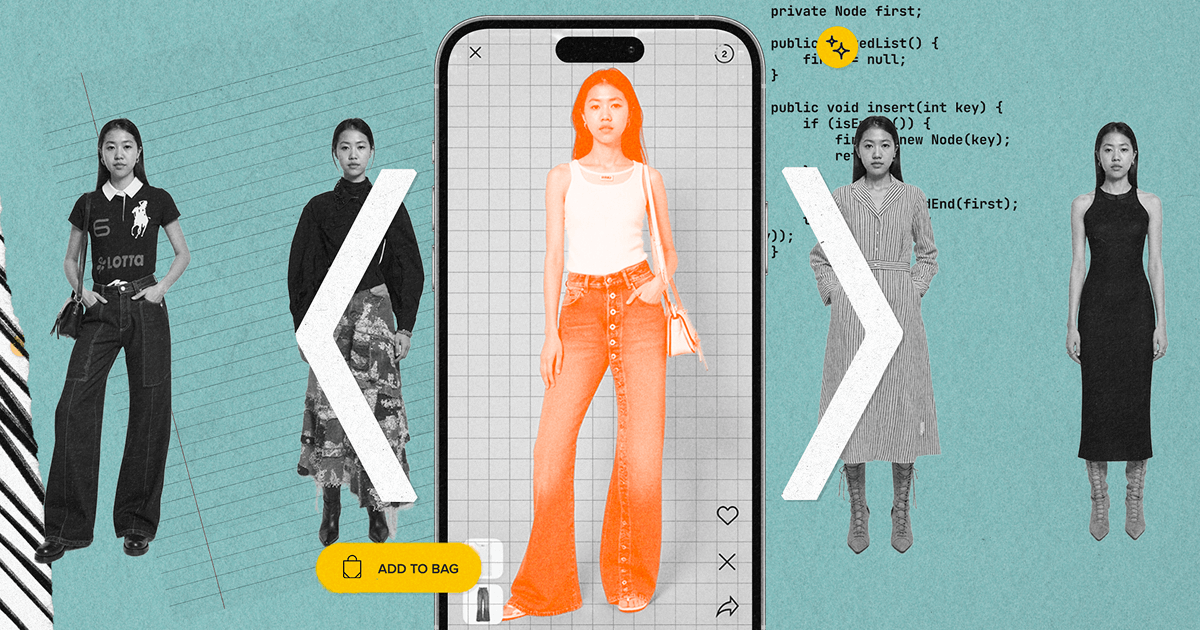
Divine, sure… maybe too divine.
But let's not get carried away, because shopping has never been only about transactions.
If shopping were just logistics, Supreme would be worthless, streetwear drops wouldn't cause riots, and your Instagram feed wouldn't be packed with mid-century chairs you don't really need but definitely want. The uncomfortable truth is that much of retail's magic often comes from inefficiency and emotional excess.
Ironically, in optimizing every step, AI might flatten the very joys that spark consumer culture itself.
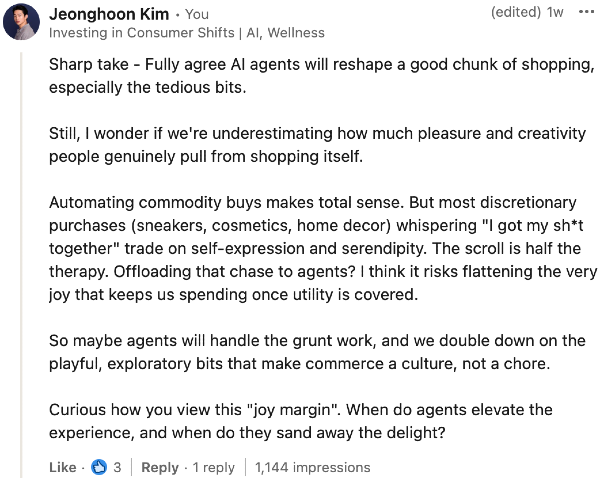
When commerce shifts from a convenient chore to a cultural experience, it taps into impulses and emotions far beyond the need for a product. This is what I'd like to call the "Joy Margin": the emotional surplus from the shopping experience.
It's what transforms buying sneakers into self-expression, cosmetics into therapy, and home decor into personal storytelling. It's where AI's frictionless convenience hits an ironic wall: removing the friction also removes the fun.
The Shopping Split: Hedonic vs. Utilitarian
Psychologists often distinguish between two modes of shopping: utilitarian (goal-oriented, practical, "work") and hedonic (experiential, fun, "play"). The same trip to a store can fulfill both: buying groceries to feed your family (utilitarian) and tossing in a fancy IPA as a treat for yourself (hedonic).
The key difference lies in the purpose and the emotional state of the shopper. Utilitarian shopping is about solving a problem or checking a task off your list; hedonic shopping is about the enjoyment of the process itself.

Researchers Babin, Darden & Griffin famously quantified these dual values: utilitarian value is the practical utility derived from a purchase ("I got what I needed"), whereas hedonic value is the pleasure and excitement from the shopping experience ("That was fun!"). Hedonic shoppers see buying as an immersive experience; a means of escape from everyday reality and a form of self-expression.
AI agents, by design, excel at the utilitarian side. They are literal-minded problem solvers: you tell your AI you're out of paper towels, it finds the cheapest bulk deal and orders it. Transaction complete.
For low-stakes, low-enjoyment purchases, this is fantastic. Few of us derive deep joy from buying trash bags or printer ink. In these cases, automation simply removes a tedious errand from our day; no love lost.
But the hedonic side of shopping is a different beast. It thrives on friction, surprises, and personal involvement. The risk is that AI, in optimizing everything, might sand away the delightful rough edges that make shopping experiences memorable. An AI agent doesn't get bored or inspired; it won't impulse-add that wildly unnecessary cactus-shaped mug to your cart because it made you smile.

Its strengths (speed, precision, rationality) are, ironically, weaknesses when it comes to recreating the irrational, emotional highs of consumer culture.
To visualize this, imagine a simple matrix of shopping experiences. Let's call it the Joy-Margin Matrix.
| High Joy (Hedonic) | Low Joy (Utilitarian) | |
|---|---|---|
| Hard to Automate | Experiential Shopping – Fashion hunts, luxury boutiques, travel planning. The experience itself matters. | Personalized Necessities – Fresh produce, custom PCs. Trust in personal judgment needed. |
| Easy to Automate | Curated Leisure – Netflix recommendations. Convenient, but loses some discovery thrill. | Chores & Commodities – Toilet paper, detergent. AI's home turf; no emotional loss. |
Top-left quadrant is where commerce meets culture, and where human shoppers will always reign. Here the "joy margin" is thick: we derive significant gratification from the process of shopping, beyond the item itself.
Why We Still Leave the House
To understand which parts of shopping are safe from AI, we need to examine what humans truly get out of shopping (besides the product). It turns out we go to stores, browse Instagram feeds, or visit farmer's markets for a whole range of psychological rewards: some obvious, some subtle. Here are a few major ones:
Identity Curation
Our purchases are often extensions of ourselves. Psychologists talk about identity-congruent consumption, meaning we buy things that align with how we see ourselves or how we want to be seen. From the band T-shirt that broadcasts your music taste, to the eco-friendly water bottle that signals your values, shopping can be a way to "buy" a sense of self. That $800 Supreme hoodie isn't 4000% warmer than a $20 generic one; its value is in the identity and status it confers.
Can an AI understand you well enough to pick the shoes that make you feel most you? Perhaps it can learn your preferences, but the act of choosing is itself a validation of personal taste. If an algorithm dresses everyone, do our clothes still say anything about us? Part of the joy is curating your own style and the little triumph of "Yes, this is me." Handing that off to an AI stylist might feel like outsourcing your identity.

Serendipity, or the Art of Happy Accidents
Ever walked into Costco for groceries and left with an inflatable kayak? Discovery is a huge thrill in shopping. It's the treasure hunt impulse: finding a unique vintage lamp at a flea market or a hidden-gem designer on Etsy delivers a burst of joy precisely because it wasn't expected or algorithmically predicted.

Serendipity is stubbornly a human trait. AI tends to trap us in recommendation loops ("if you liked X, you'll like Y"), which is convenient but can feel stale and limiting. Most discretionary buys thrive on self-expression and the thrill of accidental discoveries. When everything is hyper-curated, where's the room for happy accidents? An AI that perfectly knows what you'll like might remove the hunt, and thus, the exhilaration of the catch.
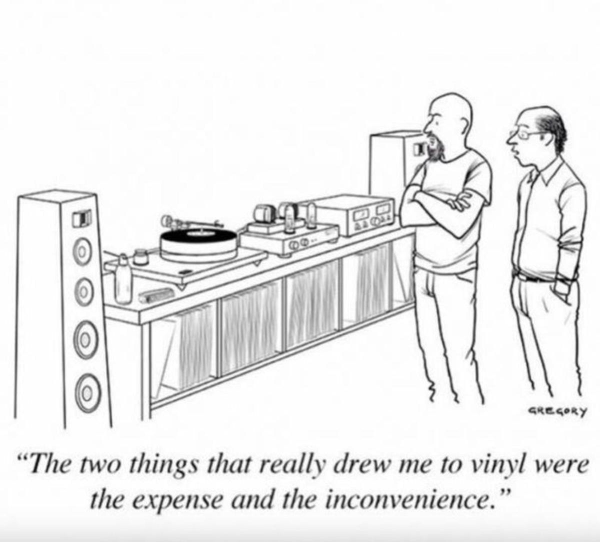
Status Games and Social Rituals
Shopping is also a social activity and a status game. Think of the energy of streetwear "drop" culture: the lines around the block on release day, the bragging rights of snagging that limited-edition sneaker. Brands intentionally inject friction and FOMO into these experiences via limited supply and timed releases. The result is a community of fans who bond through the shared quest. Sneaker brands use manufactured scarcity to whip consumers into a frenzy, forcing them to scramble to grab one of the few pairs and feeding the hype in the process.
Here, the difficulty is a feature, not a bug: the harder it is to get, the more status in succeeding. If an AI bot simply auto-checkouts the latest Yeezys for you (RIP to the hype), you have the shoes, but you bypassed the cultural ritual that gives them meaning.

The same goes for luxury shopping: a lot of high-end brands rely on high-touch in-store experiences (personalized service, fancy showrooms, VIP events) to make customers feel special. It's performative consumption: you're not just buying a watch, you're joining an elite club. AI can't sip champagne with you at a Rolex boutique or compliment how the bag looks on your arm. That social/emotional reinforcement is key to why people indulge.
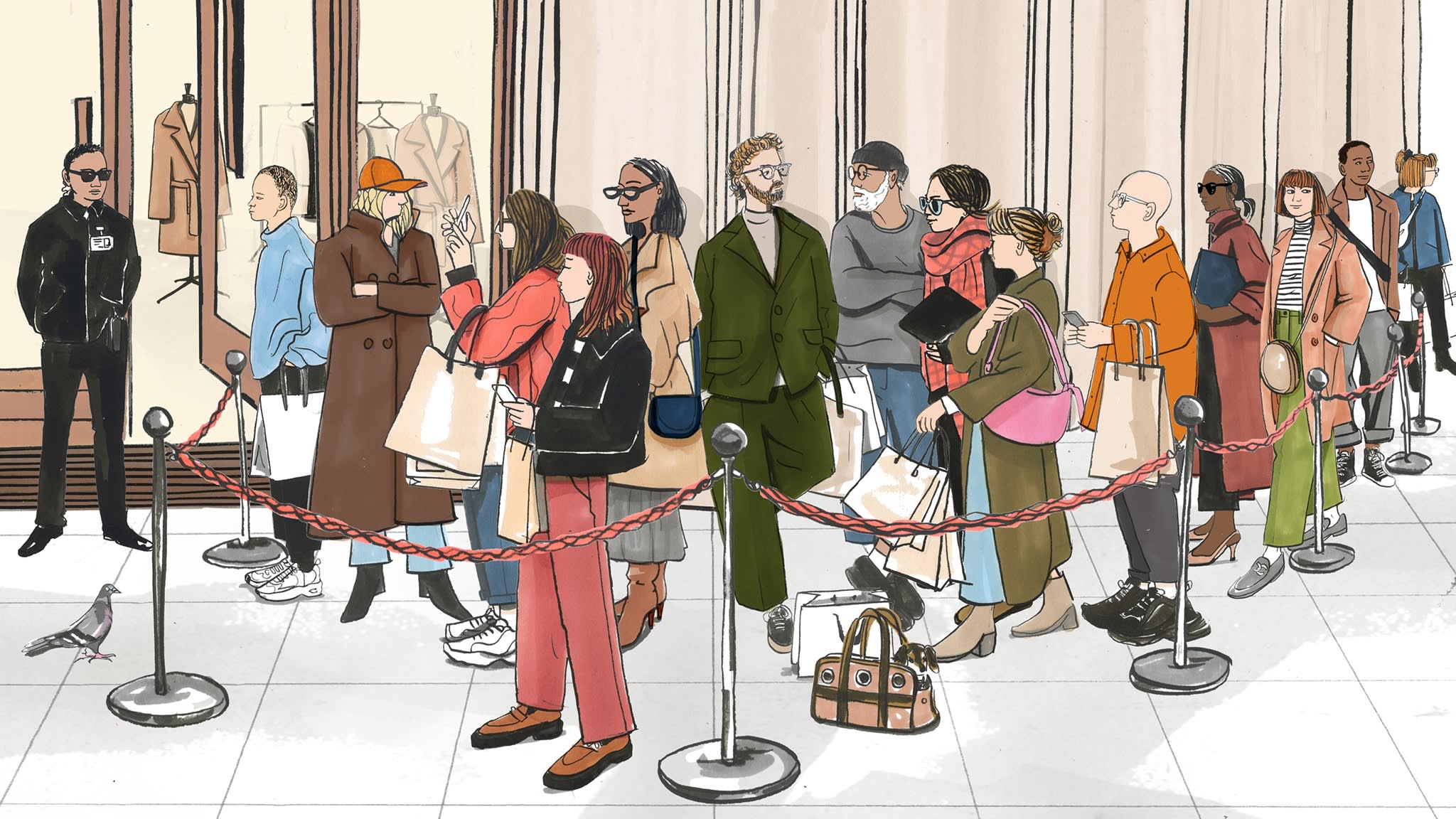
Sensory Pleasure and Immersion
Human beings are sensorial creatures. Stores are designed to exploit this: the smell of Cinnabon wafting through the mall, the perfectly arranged colorful display at a cosmetics counter, the pleasing tactility of flipping through vinyl records or trying on a cashmere sweater. These sensations create a mood and memory that online algorithms can't match.
A study on "retail therapy" noted that the multi-sensory atmosphere of stores can actually transport us and distract from our worries. It's an all-consuming experience that, in moderate doses, genuinely boosts our happiness. Even just browsing can trigger a surge of dopamine and endorphins through the whole journey, not just at purchase. The tactile act of shopping (trying things on, testing gadgets) stimulates us in ways clicking "Buy Now" cannot.
Yes, AR/VR try-ons are improving, which helps utilitarian fit issues, but they're still a far cry from the textural and social experience of a real dressing room. Until we have full Ready Player One-style immersion, physical shopping has a sensorial richness that digital agents can't emulate.

Empowerment and Control
Paradoxically, one reason people emotionally enjoy shopping is that it offers a micro-dose of control in our lives. When you're choosing between the leather jacket or the bomber jacket, you are in charge. This can be therapeutic, especially when life feels overwhelming. One study found that making purchase decisions helps restore a sense of personal control and can alleviate sadness. Choosing something, no matter how trivial, proves to ourselves we have agency.

Retail therapy is real: it's not just about acquiring things, but about the emotional lift from deciding and treating yourself. If we delegate decisions entirely to AI, we might lose this mood-boosting effect. An AI that says "I've ordered you new jeans" denies you the little victory of saying I chose these jeans.
Sure, not everyone finds choosing empowering, but for many, shopping is a safe space to be the boss of something. Offloading all choices to a robot could ironically leave us feeling less in control of our lives, nullifying one of retail's mental health perks.

Impulse and Surprise
Human shoppers are impulsive; we're susceptible to shiny objects and sudden whims. A significant chunk of retail revenue comes from impulse buys (that pack of gum at checkout, or the random gadget you didn’t plan on). Studies estimate that between 40% and 80% of purchases are unplanned in-store, depending on the category.
🔎 Impulse Buying: Physical vs. Online Stores
Physical stores excel at prompting these with clever layout and ambiance. Online, it's a bit less: about 25% of online purchases were unplanned, likely because the environment is less sensory and there's a delay (you can't consume the item immediately, which taps the brakes).
Now imagine an AI agent that strictly follows your shopping list and never deviates unless explicitly told: your impulsive indulgences could drop to zero. Good for your wallet? Maybe. But not so good for that "treat yourself" feeling or the retailer's bottom line. Without the possibility of surprise ("Damn, I want it!"), shopping becomes a sterile transaction.
Interestingly, some impulse purchases also tie back to mood management; we buy on impulse often when emotional. An AI might miss the nuance that your Ben & Jerry's binge isn't just sugar craving: it's emotional comfort after a brutal week. Instead, it'll stick rigidly to your practical list, leaving no room for spontaneous treats. The result: fewer delightful surprises and perhaps fewer chances to indulge and celebrate spur-of-the-moment desires.

Effort Justification
This one is a bit counterintuitive: the more effort we put into something, the more we tend to value it. Behavioral economists dubbed this the IKEA effect, after the brand's knack for making you assemble your own dresser and consequently love it more than if it came pre-built.
📊 Quantifying the IKEA Effect
In experiments, people were willing to pay 63% more for furniture they built themselves, compared to identical pre-assembled pieces. The act of investing labor creates attachment.
In shopping, the "labor" might be the hunt, the research, the comparison, or even the negotiation. If you spend an hour finding the perfect vintage Levi's jacket, that jacket means more to you than the one a stylist bot served up in seconds. By removing effort, AI risks making purchases feel less earned, and perhaps less cherished.
Sure, not every purchase needs to be cherished, but for those special items (the ones we tell stories about) the struggle or effort is part of their meaning. "I got this in a little shop in Portland after searching all afternoon" carries a romantic weight that "Oh, my AI found that for me online in 2 seconds" just… doesn't. When convenience is maximized, we might end up oddly apathetic about the results.
In a world where an AI agent can outfit your entire home while you sleep, you'll certainly save time, but you might rob yourself of the pride and satisfaction that come from curating your own space. There's a reason DIY and custom-built goods have enduring appeal.
In summary, shopping scratches psychological itches that go far beyond mere product acquisition.
From identity and status, to discovery, to emotional self-regulation, these human drivers form the "joy margin": the extra value we glean from the experience of shopping. Any retail innovation that ignores this, focusing only on speed and convenience, runs the risk of flattening the consumer experience. And a flat experience might mean consumers ultimately spend less, not more, or shift their spending to channels that still deliver the thrill.
Robot-Proof Retail (At Least for Now)
Not all shopping is created equal. Certain product categories and retail sectors are far more entrenched in hedonic and experiential values, making them unlikely to be fully handed over to AI agents anytime soon. Let's tour a few:
Fashion & Streetwear
Clothing is the classic form of self-expression. People derive enjoyment from browsing styles, trying things on, and piecing together outfits that communicate their personality.
The rise of sneaker and streetwear culture in particular underscores how much process matters. Brands like Nike, Adidas, and Supreme have turned releases into events, with build-up, suspense, and community interaction. Even as technology enabled online drops, the culture adapted rather than fully automating. Raffles and bots replaced lines and campouts to some degree, but true enthusiasts lament that "the chase" was half the fun. An AI that just secures every item for you at retail price might kill the story. Where's the excitement in that?
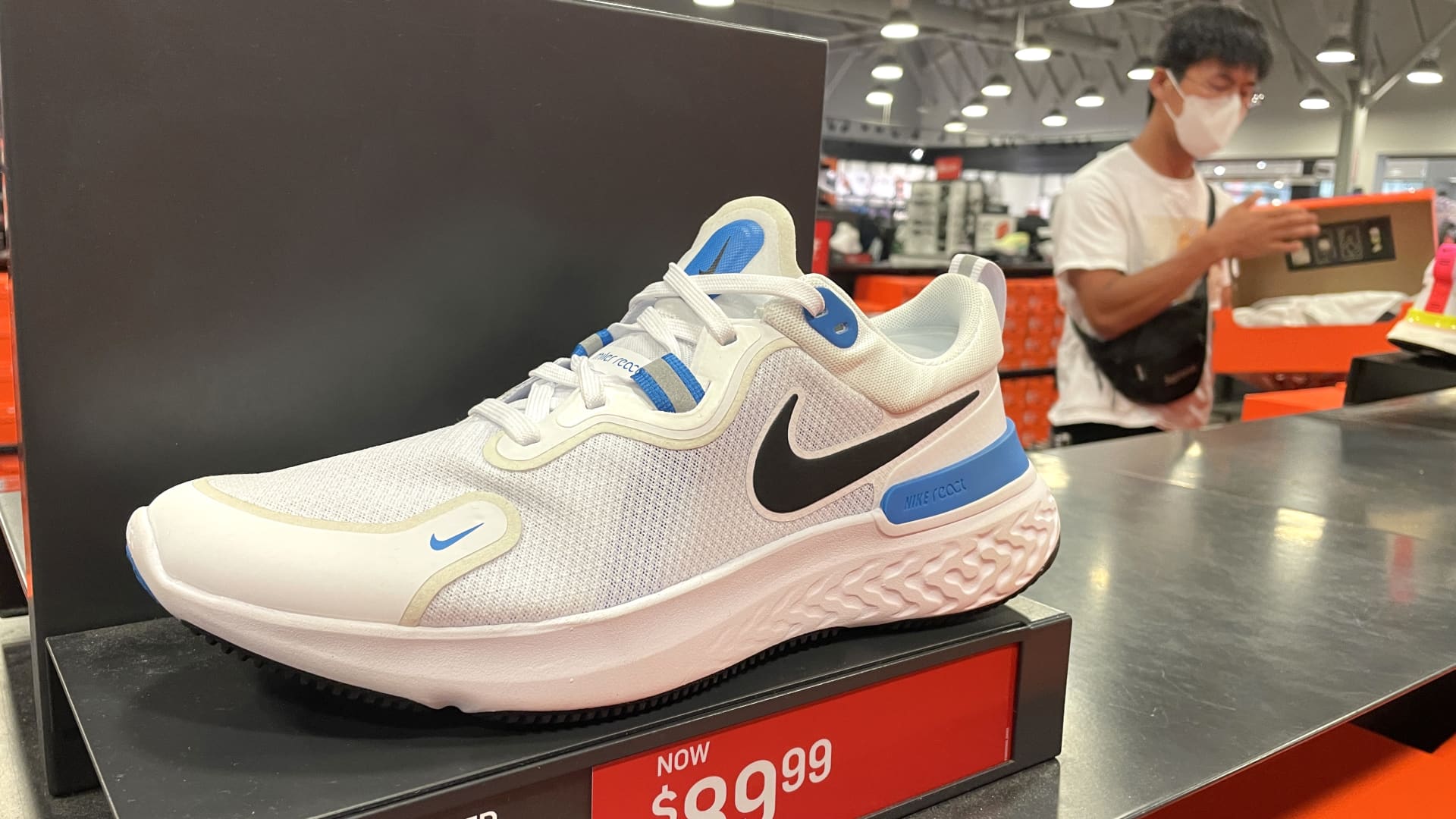
Shortcutting the hunt, spoiling the fun.
And consider personal style: would you trust an AI to generate your daily outfits? Some services do offer AI styling, and they can be convenient for basics, but many fashion-forward consumers actually enjoy the creative ritual of choosing a look. The bottom line: in fashion, the emotional stakes are high. This isn't to say AI has no role: it's great for virtual try-ons and suggesting your size, but the final cut often needs a human touch because it's so tied to identity and emotion.

Then again, his fans might actually beg AI to step in...
Luxury & High-End Retail
Luxury shopping is practically defined by its experience. Walk into a Louis Vuitton or Gucci store and you're pampered: plush seating, attentive staff offering you espresso or champagne, products displayed like art. The brands are selling far more than a purse or watch; they're selling status, exclusivity, and an experience of indulgence.
Many luxury buyers actually relish the in-person experience (or at least require it to justify the purchase). The idea of an AI agent buying a $12,000 Birkin bag on your behalf seems counterintuitive when the point is for you to revel in choosing it and feeling special doing so. Moreover, luxury often hinges on storytelling and heritage: elements that come alive through human salespeople and marketing, not raw spec sheets. Even younger, digital-first luxury shoppers expect high-touch service.
AI can assist with personalization (like reminding a sales associate of your preferences), but it can't replace the white-glove treatment that makes luxury compelling. Simply put, if you can afford a Ferrari, you probably want the pleasure of test-driving it yourself, not having your AI click "Order" on a website.

Travel & Experience Planning
Could an AI plan your entire vacation, from flights to daily itineraries? Technically, yes, and services are popping up to do just that. But many travelers enjoy the act of planning almost as much as the trip. Fantasizing about destinations, scrolling through Airbnb listings with stunning views, reading travel blogs for the best hidden restaurants: these build anticipation and joy. One person's logistical hassle is another's pre-trip foreplay, if you will.
There's also trust: a seasoned traveler might be skeptical that an AI agent truly gets their travel vibe (are you hunting down hidden street-food stalls or lounging in five-star luxury?). Part of the fun is making those judgment calls yourself.
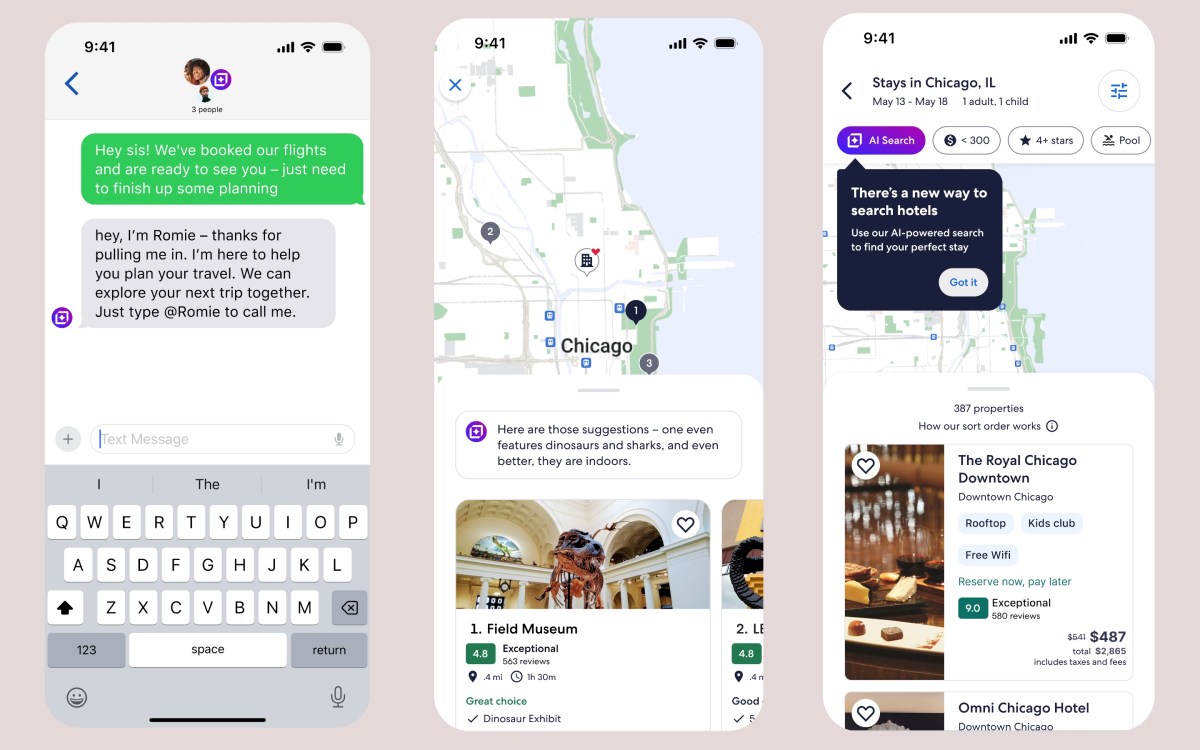
Can your AI-planned Tokyo trip top hours spent diving down r/JapanTravel, hunting ramen gems and secret izakayas?
A recent startup, Wonder, has even bigger ambitions: its CEO envisions a "superapp" that could choose all your meals (think: never arguing over what's for dinner again). As convenient as that sounds when you're hangry at 6pm, it also removes the joys of culinary exploration.
Food and travel are deeply tied to personal taste. An AI might book you the highest-rated tour and order the most popular dish, but serendipity is priceless. Travel is as much about the journey as the destination, and if the journey (planning) is automated, we might actually lose some satisfaction when we finally get there.
Home Decor & Furniture
Furnishing your living space is an exercise in self-expression, creativity, and often patience. Sure, there are utilitarian pieces (nobody gets hedonic thrills from picking a toilet plunger). But choosing paint colors, art, or even a new couch has an emotional component; this is your home, reflecting your style.
Many people like to browse and get inspired (hence the addiction to Pinterest boards). It's telling that IKEA thrives despite its friction: people enjoy walking the maze of the store, imagining their life with each room setup, then investing sweat equity to build the furniture. An AI could rapidly filter options by size, price, reviews and spit out the "optimal" couch for your criteria, but it might miss that je ne sais quoi element that makes you fall in love with a piece.
Moreover, home items are tactile: you want to sit on that chair to know if it's comfy, feel the rug's texture, see the true colors in your lighting. Online furniture shopping is huge, but it often comes with generous return policies for this reason; we're still figuring out how to digitally convey feel.

Who knows? You might get lucky hunting vintage, but only if you get off the couch.
Until VR and haptics catch up, a lot of people will opt to visit showrooms or at least order swatches. They find joy in the comparing process. And when everything in your home has a story, your space feels uniquely yours.
If AI designs your room in a snap, it might look nice, but will it feel like you? The worry is a world of AI-curated interiors could start to look homogenized, optimized for Pinterest perfection but lacking the quirky personal touches that make a house a home.

Unfortunately, Pinterest is already drowning in AI sludge.
Hobbies, Collectibles & Niche Interests
If you've ever met a passionate hobbyist – whether a sneakerhead obsessively scouting retro Jordans, a Pokémon-card fiend chasing down Charizards, or a whiskey nerd hunting rare single malts – you know that for these folks, the hunt and exploration are integral to the hobby. They love digging through crates for that rare record, or trekking across town hunting down that ultra-rare craft beer.
Many hobbies also have vibrant communities where the act of shopping/collecting is deeply social (comic conventions, record fairs, car shows). An AI might efficiently locate the missing piece in your collection online, but that shortcuts the thrill of finding it yourself.
There's a reason eBay hasn't killed every collectibles shop; plenty of people still enjoy going to stores, chatting with other enthusiasts, and serendipitously discovering items they weren't actively searching for.
Impulse and intuition play a big role in collecting. You might not tell your AI to look for a specific vintage watch, but seeing it in person might spark love at first sight. True collectors often want to put in the legwork; it's what separates a passionate collector from a mere accumulator of things. AI as a tool (to get alerts for auction listings, etc.) is great, but handing over the reins entirely? That might feel like cheating oneself of the electric journey.

This guy hoards presidential hair clippings. And you thought you were niche...
None of this is to say AI will have zero impact in these domains.
In fact, AI will be a powerful augmenter of human-driven shopping in experiential categories. It can do the heavy lifting on research (aggregating reviews, finding deals, suggesting new brands you hadn't heard of), essentially acting as a super-smart assistant while you remain the decision-maker.
For example, an AI could narrow 500 hotel options down to 5 that meet your exact criteria, saving you time, but you still get to browse those 5, look at photos, daydream, and make the final pick based on what feels right. That kind of partnership keeps the joy margin intact while reducing the slog of too many choices.
🔎 AI vs. Analysis Paralysis
As an aside, tackling the paradox of choice is one area AI shines. Too many choices can be demotivating; AI curation can prevent analysis paralysis by trimming the long tail of options down to a digestible set, ideally without making you feel like you missed out on something.

The key is who's driving the experience. In the sectors above, consumers will likely insist on staying in the driver's seat with AI as navigation, not letting the AI fully take the wheel. The more the process matters to the consumer, the more they will resist full automation of that process.
Convenience's Hidden Downside
It's worth noting that we've been here before in a sense. Every advance in retail technology that promised ultimate convenience also prompted counter-movements to preserve experience. Think about the rise of e-commerce.
The message was clear: to compete with convenience, double down on experience. The same logic will likely apply in the age of AI agents.
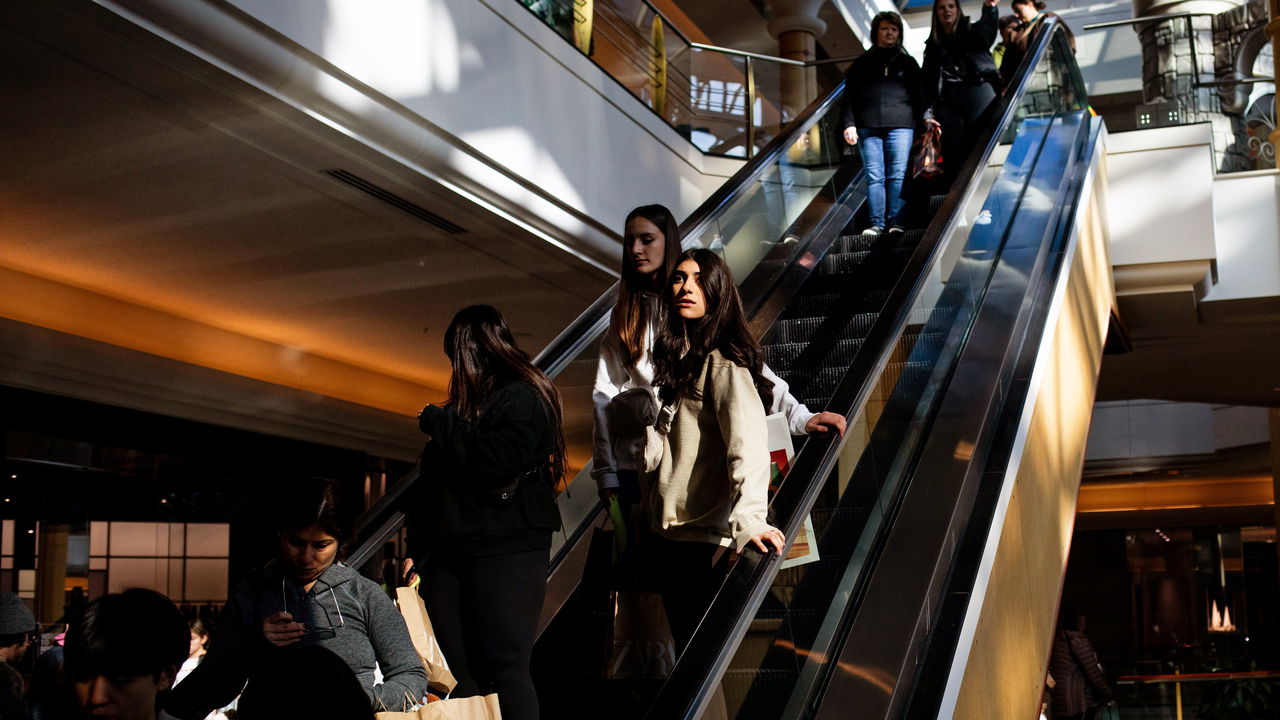
There's also a generational aspect. Digital-native Gen Z and younger Millennials are very comfortable with online and AI-driven suggestions, but they also crave authentic experiences. Ironically, some surveys show Gen Z likes malls and physical stores more than expected, perhaps because they view them as social hubs and experiential hangouts, not just utilitarian distribution points. For them, shopping with friends or making a day of it at an Instagrammable pop-up shop is a form of entertainment that no AI can replicate in isolation.
As AI becomes ubiquitous, human-curated experiences might become more valuable, even luxury, precisely because they're scarce.
We might start seeing ads saying "100% human-made recommendations" as a premium offering. If a significant portion of routine shopping goes fully automated, retailers and brands will concentrate their human-centric efforts on the higher end of the joy margin.
We may see more "retailtainment": retail spaces that are as much about entertainment or education as about buying. Already, we have showrooms like RH's galleries that are basically luxury furniture museums with restaurants attached. Nike's flagship stores now often include personalized sports experiences and community spaces. These are bets that people still want to shop in person when it's enjoyable.

If anything, AI taking over the drudgery might free up humans to spend more time and money on the fun shopping. No need to wander the grocery store for staples if your AI does it; instead, spend Saturday digging through camping gear, test-driving that vintage Porsche you've been eyeing, or getting lost in a hardware store. An outing designed for pure indulgence, zero errands.
Yet, companies must tread carefully. If AI agents optimize away all the friction, they could inadvertently reduce consumer spending in discretionary categories.
When an AI sticks strictly to your list and budget, you won't get those impulse additions that retailers bank on. And if an AI optimizes for value, you might not splurge on the premium brand that spends millions on marketing to win your heart; your AI might tell you the generic is just as good.
This threatens the classic marketing funnel; brands can't rely on catching your eye with a cute display if you're not the one doing the browsing. They might have to instead market to your AI or hope the AI's algorithm favors them.
That's a weird shift: winning over algorithms instead of consumers.
But in categories where we want to be won over (emotionally), an AI shield could actually dampen sales. There's a real scenario here where the pendulum swings back and companies realize they need to re-inject some friction and story into the process to stimulate demand.
AI Saves Time. We Savor Finds.
None of this is to bash AI; the coming wave of AI shopping agents will bring incredible convenience and much-needed relief from decision fatigue. We'll wonder how we ever lived without our digital concierges handling the boring bits of commerce. But as with many technological leaps, the gains come with trade-offs.

When you remove all the friction from shopping, you also remove the sparks that friction creates: curiosity, desire, surprise, satisfaction. Those highs are why we have shopaholics, not just buy-aholics; it's the act of shopping that hooks us, the feelings it generates, not merely the accumulation of goods.
The future of retail will likely be a symbiosis of AI efficiency and human experience. The winning brands and platforms will be those that figure out how to let algorithms handle "commerce as a chore," while amplifying "commerce as culture." Companies that embrace the joy margin (rather than engineering it away) will keep us emotionally engaged and coming back for more. After all, you can't algorithmically calculate inspiration or program genuine passion.

Type "college reunion, subtle glow-up, no try-hard," and instant outfit inspo appears. Slick. But if the treasure hunt's a mere prompt away, what's left to treasure?
So next time you find yourself mindlessly tapping "Buy Now" or letting an AI reorder your basics, remember to also indulge in the joyful side of shopping now and then.
Stroll through a farmers market, try on that jacket in a boutique just for fun, wander a bookshop and pick something purely because the cover spoke to you. These experiences are more than the sum of their transactions; they're little moments of play, discovery, and self-expression. That's something no agent can truly replace.
In the grand bazaar of consumerism, the humans still have a few tricks (and treats) up our sleeves. Because, let's face it:
Shopping stripped of the thrill is just logistics; and logistics never gave anyone goosebumps.















